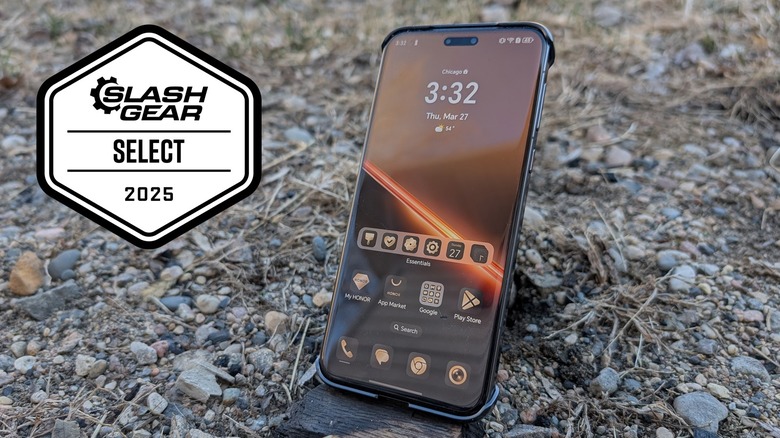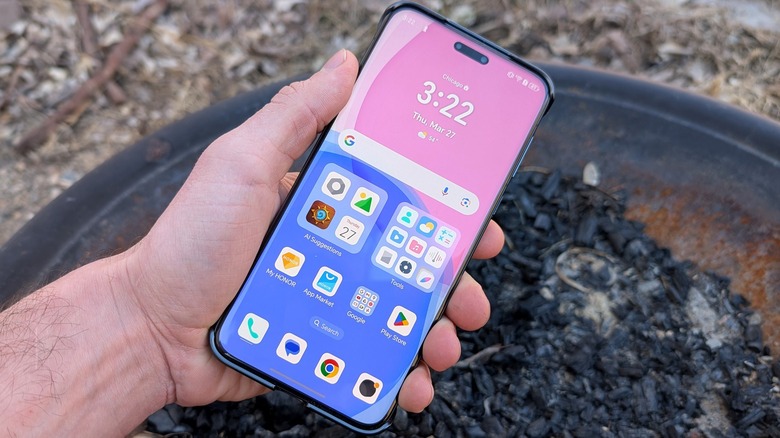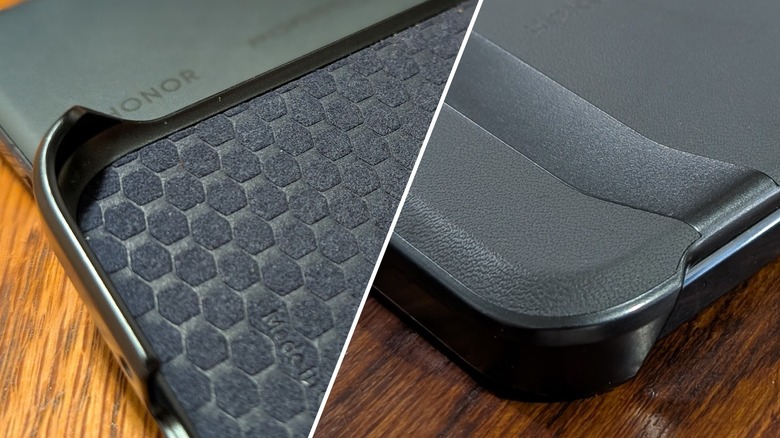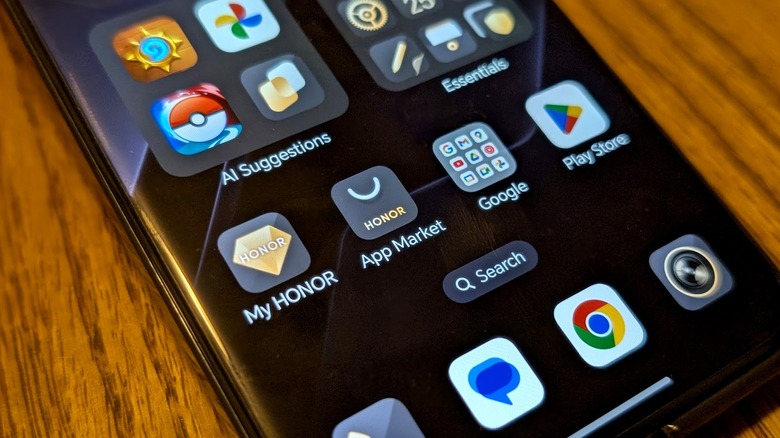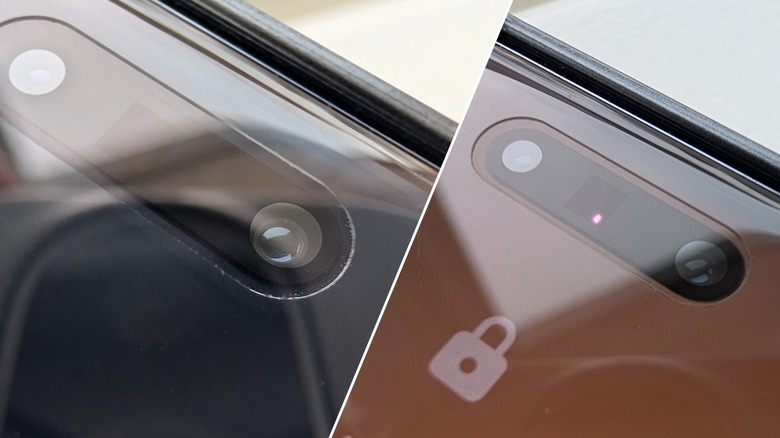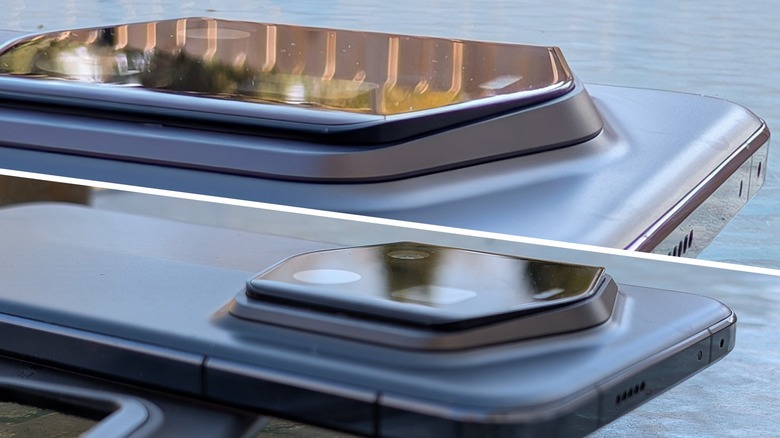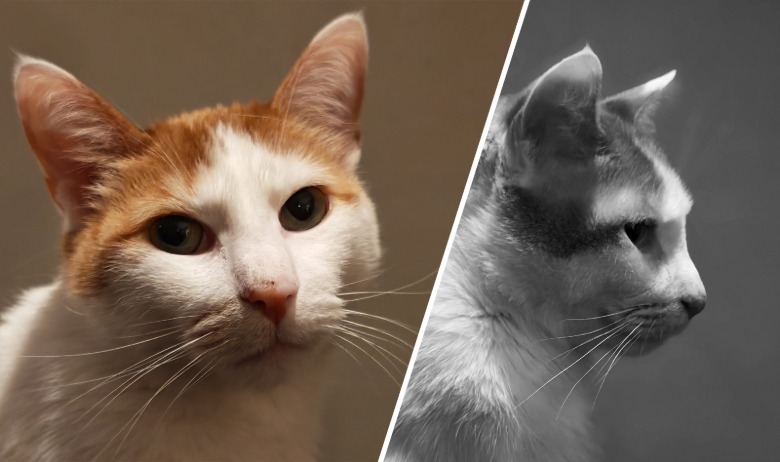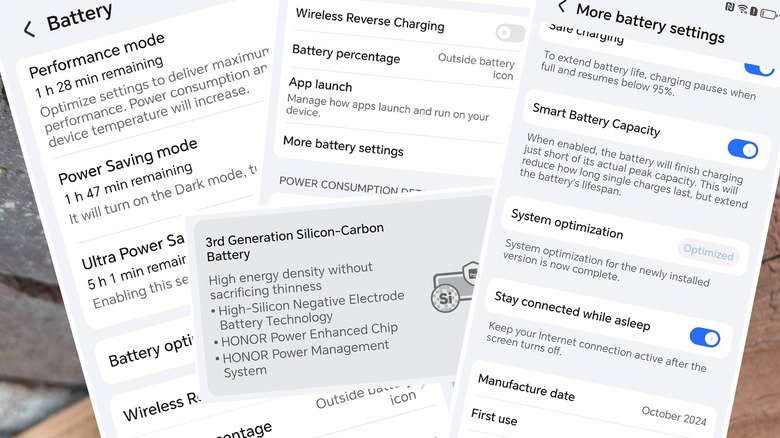Porsche Design Honor Magic 7 RSR Review: A Smartphone Special Edition That Feels Driven
- Big bright display
- Excellent cameras both front and back
- Nice home screen software experience
- Porsche Design in full effect
- A few unnecessary pre-installed apps
- Size and shape makes it feel a bit unwieldy
- Gigantic camera bump
- Considerable price
The Porsche Design Honor Magic 7 RSR is a smartphone that's made to impress. It's rolling with a big, sharp, smooth display, it has excellent camera arrays on both its front and back, and its hardware has been given an infusion of daring and delightful flare. Much like past collaborations between Honor and Porsche Design — like we saw in our Honor Magic V2 Porsche Design Edition Review — this smartphone does not cut corners.
At the same time, it's not for everyone. It isn't an iPhone, it is not as gigantic as a Samsung Galaxy S25 Ultra, and it doesn't have a display that folds this way or that. This Porsche Design Honor Magic 7 RSR is a powerful, striking modern mobile phone that's ready to hold its own against the biggest names on the market. But you're not here to compare your phone to someone else's phone — you just want to know if this one is worth the cash you'll pay to own it.
Honor provided us with a Porsche Design Honor Magic 7 RSR to get a top-to-bottom look at how their most advanced device fares in everyday life. Before you drop in and assume you'll be able to purchase this device at your local outlet store or mobile carrier — take note: despite this being a "Global Edition" of the device, this Porsche Design Honor Magic 7 RSR is not available for sale in the United States.
Industrial Design and Display
This smartphone presents a mix of premium features and attempts and combining every high-end hardware detail in the book, all at once. While most of the bestselling high-priced smartphones in the U.S. have been released with flat frontside displays (in the last few years, anyway), Honor's display glass is decidedly curved on all sides.
The 6.8-inch display panel is LTPO OLED, works with a 120Hz refresh rate, and it has the potential to be brighter than you might ever need it to be at max 5000 nits for HDR content (and 1500 nits for everything else). Across this phone's 6.8-inch display panel you've got 2800 x 1280 pixels (giving you approximately 453 pixels per inch pixel density, if you're counting).
So if you're looking at HDR10-certified content on this device — photos or video — you might see significantly brighter whites than the otherwise-peak 1500 nits.
Not that these things are particularly important to you, if you're an average consumer — but you're looking at a review of a phone that's not available on store shelves in the United States, so chances are you're not an average consumer.
Color and Case
The version of the phone we're working with here is "Agate Grey" but there's a "Provence" version, too (that's closer to lilac purple). The color on the back of the phone matches that of the metal edges around the camera array and the entirety of the device. If you're the sort of person who absolutely positively must use a case, there's also one in the box.
I mention the case here because having a smartphone case can be extremely important to the average user — and not all smartphones are made by a company that designs and releases its own cases. A low-production small brand device might not be popular enough for a 3rd-party case-maker to create protective casing — you might be out of luck. Here, that's not an issue. The case has a faux-leather feel and clips around the top and bottom of the phone, allowing you to still feel the premium metal of the edge of the phone even while it's protected from harm.
Software: MagicOS on Android
This is an Android smartphone, running Honor's MagicOS version 9.0 built on Android 15. The home screen experience is Honor's so all your apps are present on a series of panels and in folders. You can drop in to Settings to adjust this if you like — both "Standard" and "Drawer" options are available.
That option is found in Honor's very nicely-designed "Home screen & style" section in Settings. There you can pick features and toggle options for lock screen style, Always On Display, Themes, Fonts, Icons, and so forth — Honor's MagicOS makes this experience fun and entertaining.
This version of the device includes access to the Google Play store and Google services, so you'll have no issue accessing any app you're already using on your current Android smartphone. There is a not-insignificant amount of apps pre-installed on this smartphone that I'd probably never use, which is always a bit of a bummer to see. That includes LinkedIn, TikTok, Booking.com, Facebook, Trip.com, WPS Office, Amazon Music, and ReelShort. Everything else is standard Google Android or Honor MagicOS's own tools (video player, gallery, smart remote) and access to the Honor App Market and Honor's "My Honor" system.
I've found MagicOS to be a good experience here in 2025, running MagicOS 9 with Android 15. Everything seems to work smoothly and I've not found anything particularly difficult to use — it's a truly user-friendly experience.
Front Camera Array
The camera system on this smartphone is fantastic. We're working with a variety of cameras on both the front and back of the device that are worth mentioning. Normally I don't go too far into the front-facing camera system on any given smartphone because your average smartphone has its front-facing camera game at an "It's OK, it works" sort of level.
With this Honor phone's front-facing camera system we're working with a 22mm lens with 1/2.93-inch sensor, f/2.0 aperture, and autofocus to capture photos up to 50 megapixels large. The front-facing camera array also includes a ToF 3D sensor — that's a Time Of Flight depth/biometrics scanner that enables the user to unlock their device with 3D face unlock. In the photo above (on the right) you'll see a red/pink light — that's the scanner attempting to detect my face. You won't see that light while you're using the device — your eyes will be busy adjusting to the brightness of the screen while the ToF sensor is activated.
This 3D face unlock system is top-notch. After a single scan of my face, the device is able to recognize me from a wide variety of angles. I press the power button and look at the phone from a 45-degree angle and it unlocks with ease. This system also works with facial recognition for "beauty" features with the device's main camera app. Normally this sort of stuff works OK for still photos. This one works just as well with video.
Back (Main) Camera Array
On the back of this device is a set of three cameras. There's one 12mm "ultra-wide" lens with 1/2.88-inch sensor and f/2.0 aperture capable of capturing 50-megapixel photos — this is the "main" camera. There's also a 23mm lens with 1/1.3-inch sensor, f/1.4-f/2.0 variable aperture, also capable of capturing 50MP photos. Then there's the monster — a 72mm telephoto lens with 1/1.4-inch sensor, f/1.88 aperture, with 3x optical zoom, and the ability to capture 200MP photos.
This camera system works with autofocus (both front and back), as well as OIS (optical image stabilization) on the back. This device can capture Super Macro photos focusing in from around 2.5cm (tested, true, just a smidgen under an inch away from any well-lit subject will focus properly).
Much like we saw with what Honor presented back in 2024 with the Honor 200 Pro, we've got access to Harcourt Studio filters. These aren't your average filters — they represent the smartphone analyzing and adjusting the photo you're capturing according to the way it was trained to act. So it captures portraits — that's what it's made for — portraits that look like they belong in a Harcourt Studio gallery.
Above and below you'll see a variety of photos captured with the back-facing camera array on the Porsche Design Honor Magic 7 RSR smartphone. These images represent a variety of photo capture situations and environments and show the quality of the system.
Battery Life
The battery in the Porsche Design Honor Magic 7 RSR (5850 mAh) is considerably larger than the Samsung Galaxy S25 Ultra (5000 mAh), and Apple's iPhone 16 Pro Max (4685 mAh). Battery life depends largely on how much you're using the device and how much stress the device is going through, but if we're looking at battery capacity alone, this is one of the most massive you'll find in a phone of this caliber.
I've found this battery to last an easy 2 days with average use — that means several hours of gaming and periodic glances at social media and/or snapping the occasional photo while out-and-about. If I really hammer away at the device by playing Hearthstone with a sustained 120Hz refresh rate, I can run the battery out in a matter of hours — certainly no worse than I've seen with other similarly-sized devices in the past couple of years.
Wrap-up
Given the Porsche Design hardware elements along with the Honor brand software and performance, this device is very clearly made for users in search of a uniquely memorable experience. You're still using an Android smartphone, at its core, but this is a different smartphone with features that are well worth their salt.
Again, this device is not directly available for purchase inside the United States. If you find a way to have it shipped to you in the United States, take care to ask your chosen mobile data provider if the device will work with their specific radio bands — chances are it might, but that it's certainly not guaranteed.
If you live outside the United States, to purchase this device you're going to either buy it from Honor's online store (according to your region) to head over to the Porsche Lifestyle GmbH & Co. KG online store. The Porsche Design Honor Magic 7 RSR is sold online by Porsche Lifestyle GmbH & Co. KG for approximately €1,799.00 (directly converted to dollars right this minute that'll come to approximately $1,943). For that price you'll get one of two versions of the device, the smaller having 16GB RAM and 512GB non-removable media storage. The other version is a 24GB+1TB version, that is 24GB RAM and 1TB non-removable media storage.
